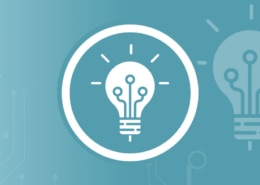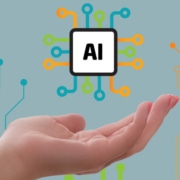Digitalization, Digitization and Digital Transformation – It’s Now or Never!
Digitalization – digitization – digital transformation – what exactly are the differences between those terms, and why do you need to know how they’re defined? It’s obvious that information technology has radically changed not only work life, but also day-to-day living in general, and a number of terms which use the word “digital” are being used to describe that phenomena. In this blog, we clarify how IT professionals use those different terms, and what that means as a result.
Up to just a short time ago, digitalization was still the accepted way in any modern corporate strategy to make an organization fit for the future. However, it has become an absolute necessity over these past few months, and in these special times is providing companies with the flexibility they need to continue to work productively and in an orderly fashion in spite of all challenges.
A company’s digital fitness has now become a key factor in its resilience to crises, and now might be the last good chance for many businesses to take the right steps to ensure they don’t fall behind and the competition becomes uncatchable. As a result, it’s crucial you know the three levels of digital change, and are able to define, based on your own business, an honest self-assessment as well as the next steps to take.
What is Digitization?
Digitization describes a change at the beginning of the process. Digitization describes the receiving of data represented in digital form so they can be read and processed by computers. The term therefore describes a technology which has existed since the very earliest days of information technology. It’s only through digitization that the information which exists in the world can be made usable for IT systems.
Here, it’s definitely possible to make the sweeping statement that as the availability of quality data from the greatest possible number of sources increases, the better these data can be then be evaluated, tied together and cultivated for decision-making purposes. The concept of data wealth is applicable in this regard. The challenge lies in obtaining data of good quality. Digitization techniques are constantly improving.
Currently, the use of AI (artificial intelligence) is essential for progress in this field. Artificial intelligence has been used for a number of years for text recognition in printed documents, with natural language recognition being another important application of AI. And recognizing objects in images and correctly interpreting scenes taken by cameras is possible in digitization only through AI.
In addition, digitization will also remain an essential task in the future so computers can record reality outside of their own digital worlds. Even today, sophisticated sensors make it possible for computers to see, hear and even smell better than a human ever could. Areas of application such as autonomous driving, medicine and agriculture are key examples of this field of application.
What is Digitalization?
Digitalization refers to a change to an overall process. The term describes the comprehensive use of information technology in the implementation of business, production and service processes, comprehensive meaning that computers are used in a process from start to end. The necessary data are passed digitally from one step to the next, or are already available digitally, and there are no media discontinuities in processing.
Digitalization requires that companies convert their technical ecosystems to information technology, and it’s essential that all functionality and relevant data can be used anywhere they’re required, without technical barriers.
One significant consequence of digitalization is an explosive increase in data, which can be explained by the fact that data are not only processed automatically, but the vast majority of data today are also being created automatically. Big data methods and technologies are addressing this challenge. Data needs to be made usable, since more and more political and business decisions are being made quickly and reliably on the basis of information which is detailed, dependable and up-to-date.
What is Digital Transformation?
Digital transformation goes even further – the term refers to a change in business models, customer relationships and even social structures. This is accompanied by changes in market and business structures which are based on the use of information technology. These extremely rapid changes are having so sweeping an effect on existing processes and systems that the term disruptive is often used instead.
Digital transformation is changing society, business and the world of work, and innovations and disruptive changes must be considered the main factors responsible for this. Technology and its use are integral in determining whether an organization or company will be successful over the medium term.
Examples of digital transformation are by no means new, since the process got underway in the mid-90s and is gaining momentum more and more. Examples of the phenomenon of digital transformation include the online mail-order industry, Internet banks and insurance companies, arranging personal transportation via app, streaming providers in the field of media, the use of social media for targeting advertising, and much more. In our opinion, the fact that many activities which previously involved at least some travel are also being carried out via web conference is likewise leading to permanent changes in the travel industry, in particular when it comes to business trips.
In light of established examples of digital transformation, it becomes apparent that speed is more important that company size and technical competence is more important than capital. A important point here is the improved possibility of obtaining cost-effective, highly scalable and globally available IT infrastructures, made possible through public cloud services.
Bottom line: Digitization isn’t enough – go for transformation
Even our quick glimpse of the differences between digital concepts shows that digitization alone does not go far enough, and it’s clear that reliable data are an essential condition for all processes further down the line. Digitalizing processes can often boost potentials for savings as well as customer satisfaction. However, to survive over the medium term, companies need to review their business models and adapt them with an eye to digital transformation. In order to remain OR become a leader in the digital transformation race, you need to keep an eye on the following items and build up a corresponding skill set in your organization:
- Agile management and design thinking
- Cloud technologies
- Artificial intelligence
- Big data
And as experts in digital innovation and technology, we can help you do exactly that.









